A critical examination of the smartphone industry’s most desperate month
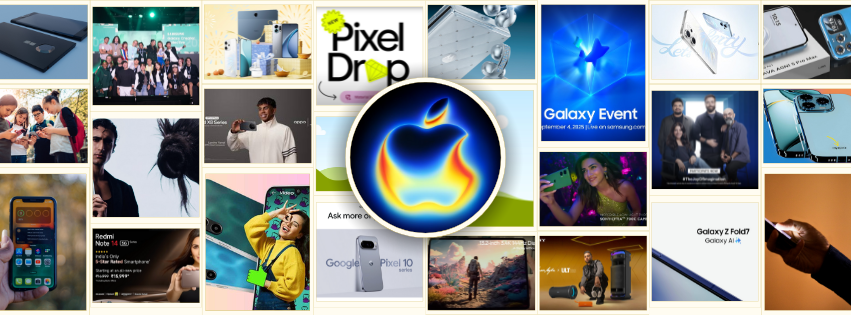
The strangest thing about digital marketing isn’t always the parade of “revolutionary” features or the breathless, back-to-back announcements of “era-defining” upgrades. Truthfully, the spectacle happens in the margins—on the launch calendars, in the nervous boardrooms, and in the feverish WhatsApp groups of global marketing teams. Because every September, as predictably as the festivities on Indian calendars, Apple announces its next event. And suddenly, as if triggered by some primal digital clock, the entire smartphone industry goes bonkers—rushing to make noise, drop product, rebrand, and, more often than not, scramble for relevance.
This autumnal performance—part drama, part farce—deserved a proper autopsy.
The Curious Case of Simultaneous Desperation
On a muggy morning thick with monsoon lethargy, I sat before a Google Sheet—every square a bonfire of brand anxiety. There, marked in red and blue, was the evidence: Google’s Pixel 10 series, jettisoned onto the market by 20 August (News18); Samsung’s much-hyped Galaxy S25 FE, executed precisely on 4 September (Croma Unboxed); and OnePlus Pad 3, slotted for 5 September like a quickdraw at a fairground (SME Times). Each brand positioning itself as early as possible, as loudly as possible, as if proximity to Apple’s thunder alone would guarantee lightning might strike twice—if only you stood close enough.
Then, the actual storm: iPhone 17, scheduled for its annual temple unveiling on September 9th (India Today). All social media, PR circuits, and influencer pipelines braced. The industry calendar was not a roadmap, but a multi-car pile-up: Oppo’s F31, Motorola’s Swarovski-studded Razr 60, the Vivo T4 Pro, and a smattering of mid-tier Samsung models crammed in as if the mere act of launching might shield them from Cupertino’s gravitational pull.
“This isn’t a showcase of innovation—it’s a synchronised spectacle of existential panic.”
This is the real September siege: a festival season where every brand, big or small, chases relevance by drowning out the competition—and, too often, itself. And as both digital marketer and antenna-tuned observer, what I saw was coordinated chaos: months of ingenuity hurriedly torched on the altar of “beating Apple to the headline.”
The Great Swarovski Catastrophe
Now, if you think panic looks the same everywhere, let me introduce you to the irrational optimism of the “premium positioning-by-any-means” brigade. Motorola’s Razr 60, reimagined for 2025 as “luxury,” now sports 35 actual Swarovski crystals, hand-placed, appraised at $999.99 (Motorola Newsroom). One could have imagined some synergy between east European crystal workshops and Chinese manufacturing precision—a quiet, tasteful elevation of form.
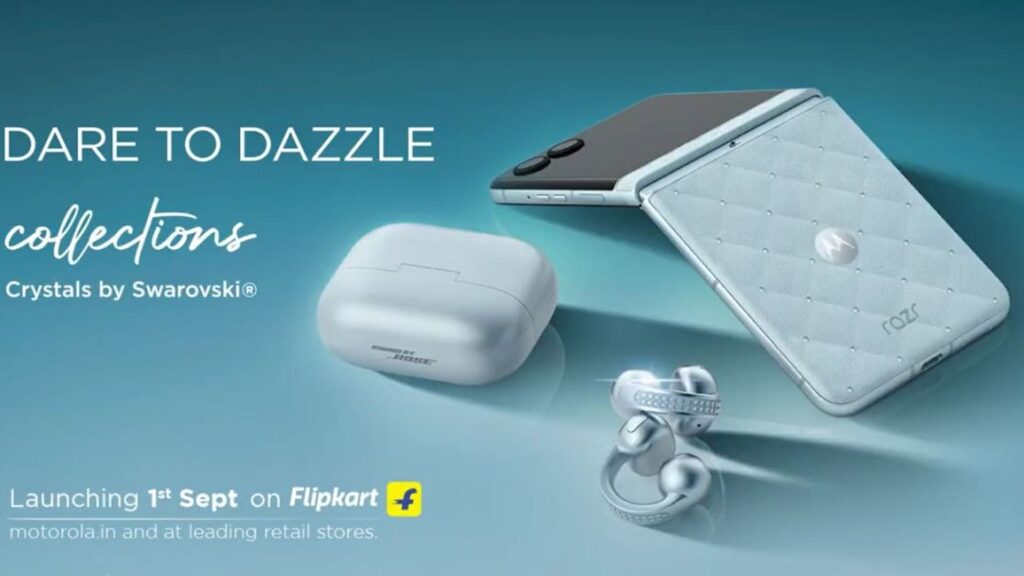
Instead, what the world received was a launch beamed from a planet where frenzied urgency meets tinsel-barrelled aspiration. Imagine: a Bengaluru Flipkart showroom, a showroom attendant beaming as she describes the “timeless sparkle” imprinted on a mid-segment smartphone. “Premium equals luxury, equals gemstones,” she insists, visibly sweating under fluorescent lighting.
And then, the campaign climax: a collaboration with SW Network and Flipkart, not so much a product announcement as a Bollywood gala (MediaNews4U). Jacqueline Fernandez appears as showstopper on a literal catwalk; comedian Sufi Motiwala playfully “roasts” influencers and tech reporters, all while Motorola executives grin into the lenses of hired cameras. To call it extravagant is to undersell it—it’s the kind of campaign only possible in an industry where heritage and hardware matter less than surface and spectacle.
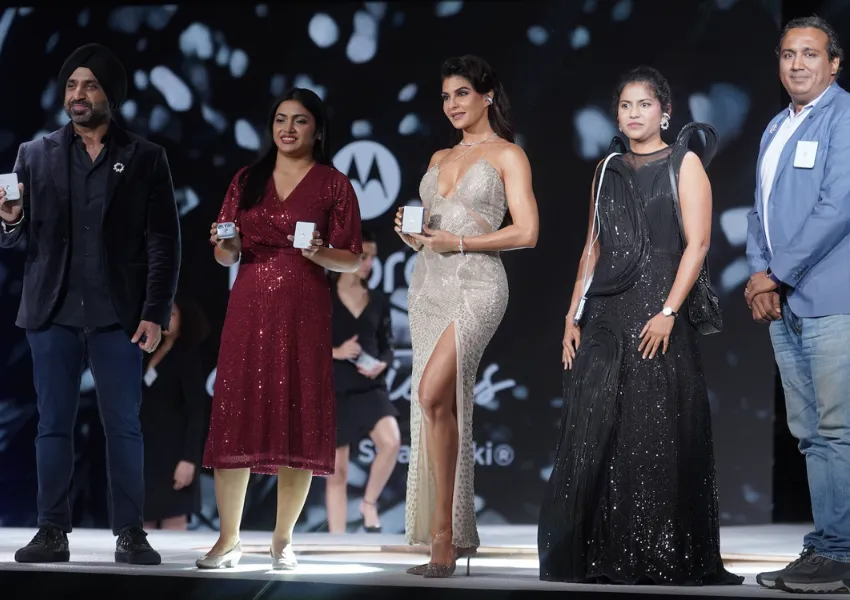
Yet here’s the rub: the product—for all its “jewel-like finish”—failed to meaningfully improve upon last year’s (far cheaper) model. The actual “innovation,” such as it was, rested entirely in the manner of its presentation, the hope being that a smattering of luxury signifiers might distract from an evident lack of functional progress.
“When you’re gluing crystals onto mass-manufactured electronics and calling it luxury, you’ve fundamentally misunderstood what luxury means.”
This isn’t an isolated quirk. It is the inevitable endpoint of an industry out of ideas. And if you want a parallel in another sector, look to Gresbond’s tile campaign—where humour and volume try and fail to stand in for substance.
The AI Washing Epidemic
If the industry’s feeble attempts at physical “luxury” weren’t bad enough, consider this year’s digital snake oil: AI. Once the buzzword of tomorrow, now the airless platitude of today—with all the technological substance of a soap bubble and the shelf life of a meme.
Samsung’s S25 FE campaign led the charge, pitching “Galaxy AI” as an existential leap (Campaigns of the World). “Cinematic Universe” adverts dropping on YouTube, influencers deftly demonstrating how the S25 is your second brain, your third eye, your always-on psychic assistant. The vignettes: pet-friendly restaurant searches, photo edits, recipe recommendations delivered by an “AI” so enthusiastic you half expect it to phone your mother personally for Diwali.

Google did not lag far behind. Material 3’s “Expressive” update boasted “radically new” lock screen effects, fresh themes, and—yes—responsive animations (9to5Google). Taps bounce, typography shudders, and colour palettes finally, bravely, match your summer kurta.
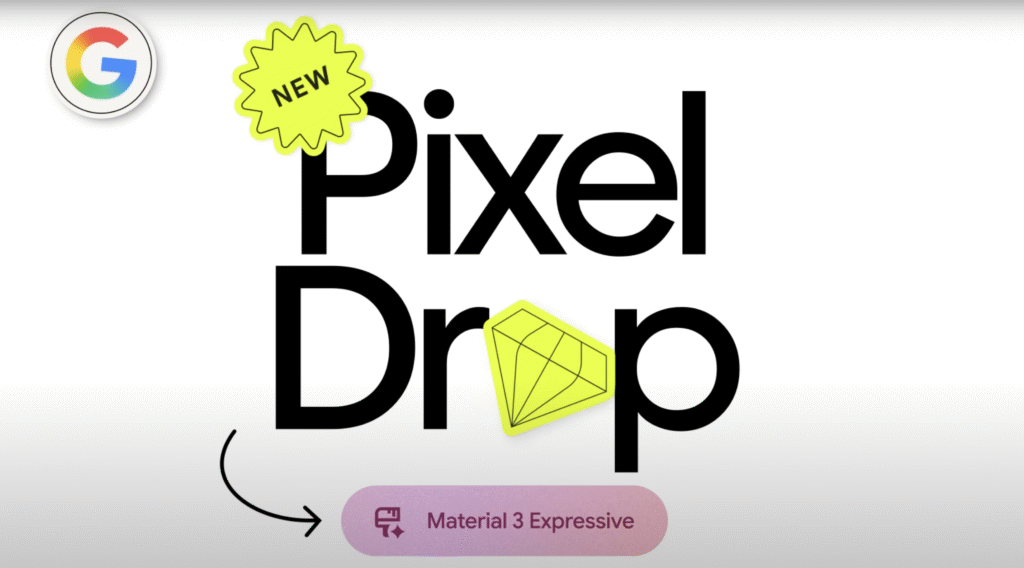
But what do these AI gestures actually achieve? How often does the real “innovation” match the ad copy? When every device is billed as AI-powered, the very notion of AI as a differentiator is immediately, hopelessly diluted. The consumer is promised the future, but too often downloads another animated lockscreen.
“If everything is AI, nothing is actually new. We’re living through the age of technical déjà vu.”
For more on this theatre of digital over-promising, I’ve previously broken down Copilot’s authenticity gap, which—like its smartphone cousins—opts for hype cycles over genuine change.
The Data-Driven Deception
Every new launch comes with its own mountain of numbers—charts, tables, animated dashboards glowing on the back-end. Motorola’s collaboration with Flipkart and Criteo checked every box (MediaBrief): 110 million “users reached,” a 34% “engagement rate,” over a billion ad impressions, and (here’s the clincher) an 18% “Share of Voice” boost. Tactical wins to the nth degree.
But what do these figures actually mean? Marketers with scar tissue in the data trenches know the story: the higher up the funnel the metric, the less it says about genuine intent. Impressions are easy. Attention is cheap. Share of Voice sounds nice in a press release, but it doesn’t move inventory. “Engagement” is increasingly a synonym for “existed long enough to be counted.”
“Vanity metrics are the peacocks of the digital marketing menagerie: beautiful, useless, and everywhere at once.”
The reality rarely makes it to the post-campaign deck. Brand recall might nudge up a notch. Product searches spike—briefly. But conversions? Loyalty? Actual conversations with potential buyers about what matters, or calls to action that stick? Not so glitzy.
If you want to see another sector making similar mistakes, see my review of a festival season in “Generic Indian Festival” marketing.
The Celebrity Credibility Crisis
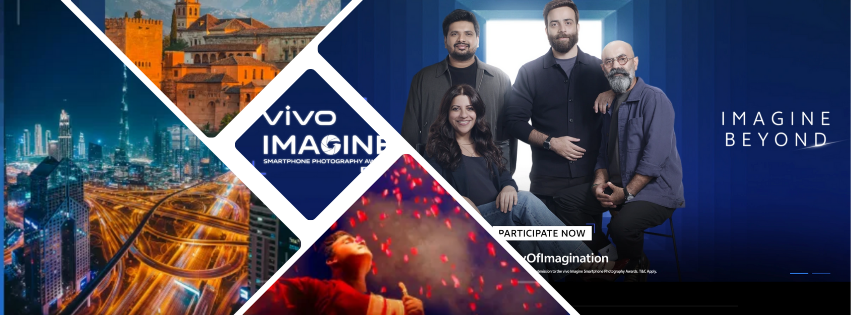
Vivo played an even subtler game this year. For its Imagine Photography Awards, it called in jurors Zoya Akhtar, Vineet Vohra, Rakesh Pulapa, Aamir Wani (India Today). Zoya directs blockbusters; the others are darlings of the modern photography world. If credibility could be bottled, Vivo had emptied every shelf.
But here’s the sting: do these laureates—a Leica ambassador, an award-laden documentarian—actually use Vivo’s devices, day-to-day? Of course not. Professional photographers live by their Canons, Fujis, Leicas. What we have instead is the borrowed authority of cultural capital, repurposed for a quick campaign hit.
Vivo is hardly the only culprit. If you want to study the epidemic, read my comparative critique of Amazon’s global and Indian celebrity ad strategies.
“Credibility can’t be handed over at a launch party—it’s earned through use, through lived experience, not through lent stardust.”
What I Would Have Done Differently
So what would actual differentiated value look like, if we stepped out of this echo chamber for a moment?
- Honesty Over Hype:
Imagine a Pixel campaign that foregrounds “thoughtful refinements for daily digital life.” Picture Instagram spots of a visually impaired user managing notifications better, or a video diary from a freelance designer for whom responsive notifications make multitasking truly possible. Paint the new as genuinely enabling, not just “fresh.” - Authentic Partnership Over Borrowed Luxury:
The Motorola Swarovski edition could exist as a boutique collectible—made for, and honestly sold to, those who love flash and have the budget. Disclose the niche; banish the absurdity of mass “luxury.” Drop all pretence of bridging “tech and fashion” as a universal aspiration. May be would have suggested this release around fashion week somewhere. - Utility Over Abstract Promise:
Samsung’s AI ambitions should zero in on pain points. Show a mother using it to coordinate between two language scripts. Let the product break a sweat—help a street vendor accept digital payments, assist a college student navigating government websites, not just recommend a better place for tiramisu.
For deeper cultural resonance, I’ve written at length about the necessity of platform specificity and context in my essay on Samsung’s digital storytelling. And when brands genuinely tell the truth about themselves and their users, magic can happen—as happened with Google’s DigiKavach campaign.
The Strategic Implications
This lust for September launches isn’t a random glitch—it’s an industry-wide collapse of imagination, a tacit agreement that the once-noble “hardware arms race” is over. So what’s left? Not innovation, not even evolutionary progress, but the repackaging of the same ideas with higher production value and more expensive influencers.
Luxury partnerships? PowerPoint smoke and mirrors. AI everything? Jargon meant to distract from functional stasis. Celebrity panelists and jurors? Hired voices singing in a digital echo chamber.
Now layer this onto a digital audience that has seen it all, scrolled past it all, and, more damningly, can Google the truth in seconds. The September launch rush, in effect, creates a negative flywheel—a cycle where superficial distinction is destroyed by shallow launches, leaving only the noise.
“We are not in an age of competition for attention, but an era of competition for significance.”
If the industry spent half its September war chests on user research and localised problem-solving, the brand loyalty curve in India and elsewhere would tilt upward, not sideways.
Learning Opportunities for Digital Marketers
For everyone in the craft, September 2025 sounds a scorcher’s warning:
- Treat metrics as means, not ends: Impressions and reach may fill investor decks, but authenticity and engagement drive the bottom line—especially in a climate where everyone can measure, but few can matter.
- Use aspiration with caution: If your product really changes the narrative, by all means, shout it. If not, restraint is the better part of valour (and memorability).
- Time your launches for distinction: If every player crowds the pitch, only the wildcard, or the most genuine, will leave a mark.
- Feature fatigue is real: Solve for substance, not slogans. Fix something tangible, leave the rest to the meme-makers on Instagram Reels.
And for those who love a thorough diagnosis of campaign missteps, mark these for further reading: the festival marketing paradox and the classic “cringe as strategy” playbook from Kajaria.
The Resonant Image
It ends, as it always does, not with a showstopper, but a scene: a middle-aged shopper in Bengaluru, wandering through a sea of dazzling launches, pausing. He runs his hand over the “brilliant” branded Motorola, then gently asks the staff if last year’s Samsung with “the good camera” is still available—something his son recommended on WhatsApp, not at a launch.
“In the end, the true contest isn’t for attention, but for trust—and trust comes not from launches or logos, but from honesty and relevance.”
The smartphone industry’s marketing performance in September 2025 is a monument to a larger tension, one that will outlast every launch cycle: When products become indistinguishable, real distinctiveness lies in knowing what they are not, as much as in what they wish to be.
For those rare practitioners still left who crave substance over spectacle, wit over swagger, and customer insight above metric-chasing, you’ll find more on suchetanabauri.com—where attention is fleeting, but understanding endures.
Sources – Further Reading and Context
- News18: August launches
- Croma Unboxed: September launches
- The SME Times: OnePlus Pad 3
- India Today: iPhone 17 launch
- Motorola Newsroom: The Brilliant Collection
- MediaNews4U: Motorola’s campaign
- Campaigns of the World: Samsung Galaxy S25 and AI
- 9to5Google: Material 3 Expressive Redesign
- MediaBrief: Motorola Flipkart campaign
- India Today: Vivo campaign
- Wikipedia: Vineet Vohra
